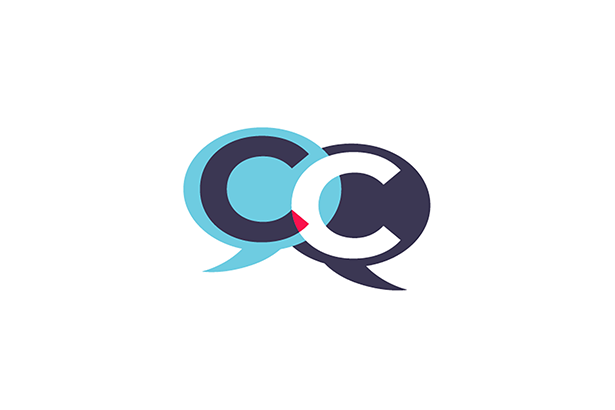We’ve all been there: everyone comes to a meeting with their own agenda. Doing this can bring unintentional conflict between departments or partnership objectives. Everyone does it. We all hate it.
Finance wants to talk about keeping tight budgets, marketing will be leading with the ‘speculate to accumulate’ philosophy. Service providers and partners will have solutions already, but communities will have other ideas as to what their priority areas are. The conflict is there before the meeting has begun. The result is silo working, a breakdown in communications and misaligned activities.
Is all conflict bad?
Yes. All conflict is bad. Challenge, however, is not.
We love a critical friend. We want people to challenge our ideas. But conflict often goes unsaid. It is bubbling underneath. If someone speaks and no one responds, it’s probably because of conflict, or fear. Good leadership of great collaborations will face that conflict head on.
You do not have to be confrontational. Nobody likes it. But deal with it, deal with it constructively, address it and move on. If you allow conflict to fester, partnerships will collapse. People will become disenfranchised, they will be unfairly treated and become resentful.
Understanding why each person is present helps us to understand the motivation behind their ideas. It helps us understand their perspective, as drivers are often unsaid. We’re too quick to jump to action without considering purpose and clarity. Everyone is in such a rush! Sometimes, we’re juggling tight deadlines and just want to offload and go back to our desks. When this happens, do you bring your best self to a meeting? Or are you resentful that the meeting is in the way of taking action?
Does ‘more haste less speed’ result in better productivity?
The short answer is yes, if you do it right.
Understanding other department or partner objectives helps you to understand their behaviour. It can also highlight dependencies and efficiencies, making processes more effective as mitigations can be placed ahead of the game.
Listening is key. We don’t mean staying quiet and waiting your turn to speak but applying cognitive listening skills to gain understanding and learn. Working collaboratively brings collective skills and knowledge together, so in theory should drive productivity and innovation. But getting it right to facilitate effective outcomes needs attention.
Conflict in teams is all too familiar for many organisations and yet completely unavoidable if leaders facilitate collaboration well.
How do leaders facilitate good collaboration?
- define the shared purpose
- ensure everyone stays focused on the purpose
- provide clarity on roles and responsibilities
- provide time for everyone to speak and share ideas
- encourage friendship by allowing time for general chit-chat
- provide space to be innovative
- provide permission to fail, recover quickly and resolve together
The first step in ensuring constructive collaboration is to define what your organisation is doing and why. It’s about making sure you have a shared sense of purpose across departments and partnerships and have defined clearly what that means for everyone working around it. It will be easier to share ideas and opinions once purpose has been defined for all. Then you need to be confident that everyone is clear! Once they’re clear, make sure they remain clear by revisiting and communicating your purpose – try leading the meeting intro with a ten second recap of your purpose.
Good collaboration requires well-defined roles so that everybody knows where they fit in and how they contribute, and where their contribution is valuable. Define who is doing what. With clarity on roles, there’s no confusion, no “I thought somebody else was doing it.” If everybody has roles, everything will move a lot smoother.
And what about turn taking?
Taking turns works as well for adults as it does for children. Taking turns builds teams who enable and encourage the sharing of ideas and opinions. Providing team members with opportunities to talk about areas important to them brings a 360 degree awareness and understanding.
Have a bit of chit-chat. We often overlook small things that bring people together; their shared experiences, shared language, life events, exposing our human side. It's not unproductive time spent on non-agenda engagement; it might feel it sometimes but teams that perform well, come together when they are relaxed, empowered, and feel as though they are working amongst friends.
How do you build effective partnerships through positive collaboration?
- Ensure you understand what's driving your partners to collaborate, remembering to sense check and ask 'why are they here?'
- Listening entirely with no agenda, which means parking your ideas and opinions temporarily whilst you listen.
- Set out clear roles and responsibilities so everyone knows where they fit and how they contribute.
- Give space to listen and process others' ideas and perspectives, as the drivers for making decisions can often be unsaid leading to confusion and further conflict.
- Make time to make friends. Being human has never been more important.
- Trust people to fail and recover quickly otherwise innovation will not happen.
Successful collaborations use group theory and teamwork consciously bringing theory into meetings. We’ve learned from our response to the COVID-19 pandemic that giving your people space to be creative and permission to fail quickly and try again is an invaluable part of the innovation process.
Good leadership with motivation to empower people to make change collectively, through collaboration and coproduction, will build good teams without conflict.
If you want to understand more about collaboration and co-design and need support with this, we’re here to help.
We will be talking about Collaboration at our Next Change Chat Event on Friday 18th March 10am. Sign up today.
Book a call to find out how we can help you shape good collaboration and co-design.
If your organisation is going through change and transformation and you’d like to sense check how ready you are for change, try our Free Change Readiness Tool and get your Change Readiness Report emailed back to you within a few minutes.
